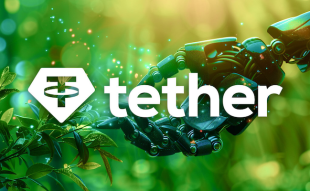Join Our Telegram channel to stay up to date on breaking news coverage
Decentralized Physical Infrastructure Networking, commonly known as DePIN, is swiftly emerging as one of the most dynamic sectors within the web3 ecosystem, profoundly influencing the daily lives of individuals across the globe. The essence of DePIN networks lies in their ability to harness incentives, encouraging people worldwide to collaboratively construct and maintain infrastructure. This infrastructure is crucial for a variety of applications, including computer rendering, electric vehicle (EV) charging, and telecommunications networks.
Helium: Pioneering the Future of Decentralized Connectivity
A prime example of this innovation is Helium, which is at the forefront of developing the world’s most rapidly expanding decentralized wireless network. Helium isn’t just a mobile service provider offering affordable $20-a-month 5G connectivity through its community-driven Helium Mobile network; it’s also a testament to the power of collective effort. Abhay Kumar, CEO of the Helium Foundation, highlights the unique aspect of Helium, stating,“Helium is a network that aligns the incentives between people that want to connect and people that are able to provide connectivity.”
Noah Prince, the head of protocol engineering at the Helium Foundation, sheds light on the tangible nature of Helium’s blockchain use case. He explains, “Helium is straightforward to describe because it involves actual physical hardware on the ground. There are two networks – a 5G network and an IoT network. Essentially, anyone can transform their home into a cell phone tower by installing a hotspot, enabling passersby to access the network.” Providers of these hotspots are then rewarded with Helium’s native token for the connectivity they furnish.
Scott Sigel, COO of the Helium Foundation, emphasizes the cost-effective nature of Helium’s community-powered network. He points out, “With Helium, it’s a community leveraging what they already have as far as locations and hardware. The idea that you can run something on a community-built network makes everything cheaper. Now, you’re talking about $20 cell phone plans, because you’re not dealing with a large, centralized organization that has to consider real estate, operations, upkeep, and headcount. So, the cost is just going to continue to decrease over time.”
Harnessing Blockchain for Scalable Decentralized Networks
The expansion of the Helium Network necessitates the growth of the underlying blockchain. Solana stands out as the sole viable option for this purpose. Since migrating to Solana in April 2023, Helium has launched its $20 unlimited 5G cellular plan nationwide in the US, extended its coverage to Mexico in collaboration with the telecom giant Telefónica, and partnered with Google to bundle its Pixel 8 smartphone with Helium services and hotspots. The impressive growth of the Helium network is a testament to the quality of its service, the value it provides, and the pivotal role blockchain technology plays in unlocking emerging industries.
Sigel elaborates on the significance of blockchain technology, stating that Solana seems to be the only option for a blockchain that can solve the scalability that Helium needs.
We’re coordinating work in the physical world at a large scale, and token incentives help to solve for that. It’s just not feasible to try to process this over traditional payment rails. It only works with blockchain technology. And at that kind of speed, that kind of scale, Solana’s a natural fit. We’re thinking about coordination and scalability, but also what the experience looks like for the average user. It needs to be intuitive, it needs to be fast, it needs to be simple. Solana truly is the only blockchain that can power those types of interfaces.
Prince also emphasizes the point that Solana is the only fit for Helium.
Building the world’s largest wireless network is a hard enough problem as it is – I don’t need a blockchain that’s getting in my way — and Solana doesn’t. As the Helium Network grows, we need the underlying blockchain to also grow with it. And Solana is the only real option for something like that.
Smog: A Unique Solana-Based Meme Coin
Smog is a new meme coin on the Solana blockchain, known for its innovative airdrop, dubbed “the greatest SOL airdrop of all time.” Unlike traditional airdrops, Smog introduces gamification, requiring SMOG token holders to complete tasks for airdrop points. The details of these tasks are kept secret, adding an element of mystery.
Aside from its airdrop approach, Smog stands out with its distinctive aesthetic. Instead of common animal mascots, it features a green dragon, contributing to its rapid popularity. Shortly after its launch on Jupiter DEX, Smog’s value surged by 1500%, and it continues to accumulate, promising potential future gains.
Related News
- Solana Is 2024’s Most Popular Blockchain, Fueled by Meme Coin Sensations Like WIF, BONK, And SLERF
- Best Solana Airdrops 2024 – Top 8 List
- Solana Price Prediction: SOL Plunges 8% As Investors Flock To This Solana Meme Coin Star’s $1M Airdrop
Most Searched Crypto Launch - Pepe Unchained
- Layer 2 Meme Coin Ecosystem
- Featured in Cointelegraph
- SolidProof & Coinsult Audited
- Staking Rewards - pepeunchained.com
- $10+ Million Raised at ICO - Ends Soon
Join Our Telegram channel to stay up to date on breaking news coverage


